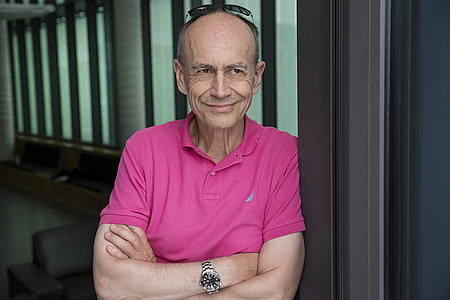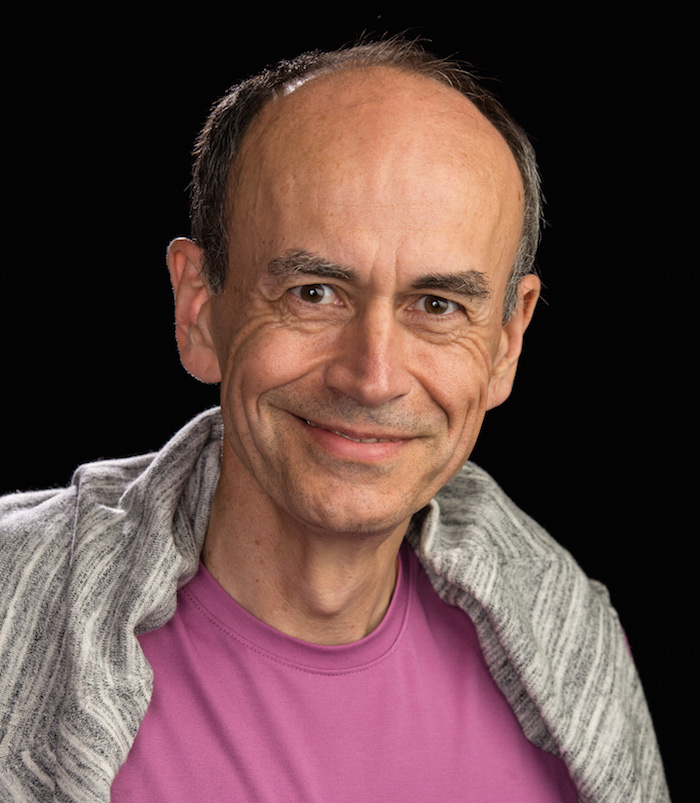Magic and truth
The Nobel Prize Winner and Einstein BIH Visiting Fellow Thomas Südhof talks about his Berlin research, the magical complexity of biological processes and the future of the neurosciences.
When two neurons in the brain communicate with one another, information is transferred from one synapse to another by means of a biochemical neurotransmitter. It’s similar to the communication between two people using language. In both cases, the transmitter and receiver must be precisely coordinated with one another in time and space in order for the message to make sense. In our research, we originally focused on the transmission of the message – i.e. on the release of the neurotransmitter: how does this process take place and how is it orchestrated between the synapses? We’re still partially working on these questions today and we’re collaborating with the laboratory of Christian Rosenmund at the Charité, which has developed a very ingenious method whereby the synapses are snap-frozen in microseconds and thus fixed in time and space. This makes it possible to observe the changes that take place in the synapse architecture in the course of transmitting the information.
As people, we often find ourselves shaking our heads in amazement at the complexity of biological processes. Time and again, I’m fascinated and astounded to observe the incredible perfection with which they function. How is it possible that they run with the very same precision each time? I think that everyone who works in biology is familiar with this feeling. We’ve understood some things, but a lot still seems like magic to us.
The neurosciences offer incredible opportunities for the future, because the instruments are becoming increasingly powerful and you can discover far more with them than you could before. Apart from that, this discipline is increasingly becoming an important branch of biomedical research. The main reason for this is the discovery that a great many diseases originate in the brain.
A noticeable mistrust of scientific thinking currently prevails
Having said that, limitations are becoming apparent too, as the public view of science is nowhere near as positive as it used to be. While it’s true that we all use the fruits of science – mobile phones, cars, medication – nevertheless a noticeable mistrust of scientific thinking currently prevails. It’s up to us as scientists to convince the public that science is a valuable asset in itself, from which society benefits even when there’s no direct result to show for it.
In my opinion, a further challenge is to deploy the limited financial resources for research in future in such a way that we utilize the real opportunities in the neurosciences. This applies both to the research, which can help the identification and treatment of disease, and to basic research, which brings advances in knowledge.
Application-oriented research could even predominate, but only as long as it’s not planned along the lines of “Here’s the disease, and now we’re going to cure it”. Because we haven’t yet even begun to understand diseases with a clear monogenetic origin, such as Huntington’s – a rare hereditary disease of the brain. We should therefore begin by studying the disease processes instead of trying to develop therapies right from the start. After all, a neuroscientist is quite simply not an engineer planning a product.

Funding program
Einstein BIH Visiting Fellows
Funding period
2014 – 2020
Project title
The role of RIM and RBP in presynaptic function and human neurological and neuropsychiatric disorders
Research areas
Neuroscience, molecular and cell physiology
Institution
Charité – Universitätsmedizin Berlin
Since 2008
Avram Goldstein Professor of Cell Physiology at Stanford University of Medicine, California, USA
2013
Award of the Nobel Prize for Medicine
1991 – 2008
Professor in the Department of Molecular Genetics at the University of Texas, Southwestern Medical Center, USA
In my view, the social responsibility of scientists consists of finding out the truth, not getting as large a slice of the “money cake” as possible. We should occasionally admit to ourselves that we don’t know something or have the courage to contradict our colleagues. The very foundation of science is that we argue with one another, and at a certain point agree on what’s true and carry on from there.
Like many scientists, I want to contribute to research results that benefit humanity. Yet I’m just as fascinated by the fact that my brain – the entirety of my experiences, thoughts, feelings and ideas – makes me that which defines me as an individual. I don’t think we’ll understand that in the near future. But the wonderful thing is that even the smallest discoveries help us to understand who we are as human beings a little better.
Text: Mirco Lomoth / Einstein Foundation
Photos: Pablo Castagnola
